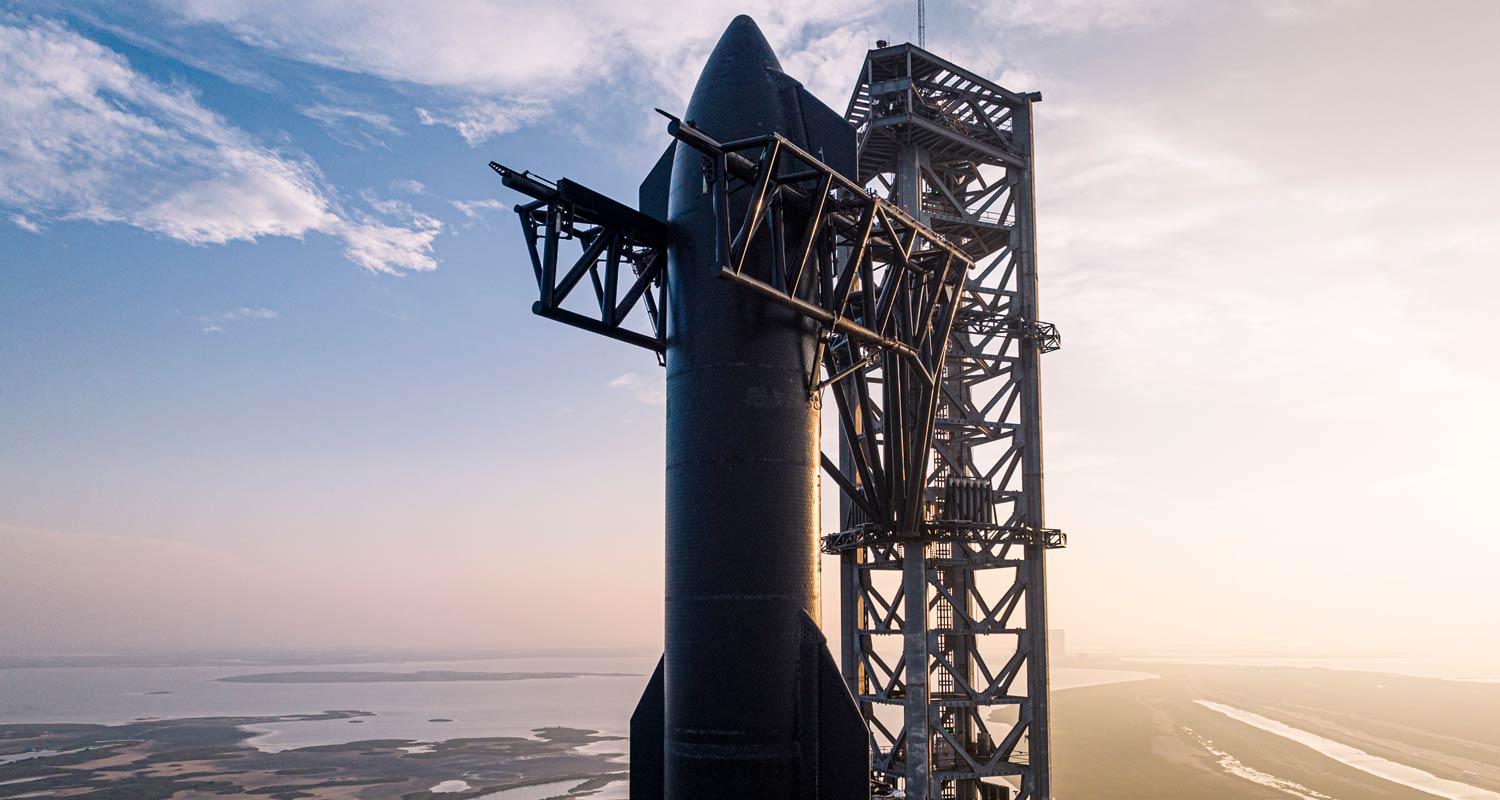
SpaceX’s uncrewed spacecraft, Starship, developed to carry astronauts to the moon and beyond, was presumed to have failed in space minutes after lifting off on Saturday during its second test, after its first attempt ended in an explosion.
The two-stage rocket ship blasted off from the Elon Musk-owned company’s Starbase launch site near Boca Chica in Texas, boosting the Starship spacecraft roughly 90km above ground on a planned 90-minute flight into space. Watch the launch video below.
But the rocket’s Super Heavy first stage booster, though it appeared to achieve a crucial manoeuvre to separate with its core Starship stage, exploded over the Gulf of Mexico shortly after detaching, a SpaceX webcast showed.
Meanwhile, the core Starship booster carried further towards space, but a few minutes later a company broadcaster said that SpaceX mission control suddenly lost contact with the vehicle.
“We have lost the data from the second stage… We think we may have lost the second stage,” SpaceX’s live-stream host John Insprucker said.
About eight minutes into the test mission, a camera view tracking the Starship booster appeared to show an explosion that would suggest the vehicle failed at that time. The rocket’s altitude was 148km.
The launch was the second attempt to fly Starship mounted atop its towering Super Heavy rocket booster, following an April attempt that ended in explosive failure about four minutes after lift-off.
Starship
The US Federal Aviation Administration, which oversees commercial launch sites, confirmed a mishap occurred that “resulted in a loss of the vehicle”, adding no injuries or property damage have been reported.
The agency said it will oversee a SpaceX-led investigation into the testing failure and will need to approve SpaceX’s plan to prevent it from happening again.
The mission’s objective was to get Starship off the ground in Texas and into space just shy of reaching orbit, then plunge through Earth’s atmosphere for a splashdown off Hawaii’s coast. The launch had been scheduled for Friday but was pushed back by a day for a last-minute swap of flight-control hardware.
Read: Paratus to offer SpaceX’s Starlink in Africa
Ignition of Starship’s 33 Raptor engines sent a shockwave across SpaceX’s Starbase launch facilities moments before the rocket system began to gradually lift into the morning sky, clearing its launch tower in a thunderous ascent toward space.
At roughly 70km in altitude, the rocket system executed the crucial manoeuvre to separate the two stages, with the Super Heavy booster intended to plunge into Gulf of Mexico waters while the core Starship booster blasts further to space using its own engines. But Super Heavy blew up, and SpaceX has yet to detail the fate of the core stage.
SpaceX in a post on social media platform X said the core Starship stage’s engines “fired for several minutes on its way to space”.
“With a test like this, success comes from what we learn, and today’s test will help us improve Starship’s reliability as SpaceX seeks to make life multiplanetary,” the company said.
A successful test would have marked a key step towards achieving SpaceX’s ambition producing a large, multi-purpose spacecraft capable of sending people and cargo back to the moon later this decade for Nasa, and ultimately to Mars.
Read: Intelsat invests in lower orbits as SpaceX upends sector
Musk — SpaceX’s founder, CEO and chief engineer — also sees Starship as eventually replacing the company’s workhorse Falcon 9 rocket as the centrepiece of its launch business that already lofts most of the world’s satellites and other commercial payloads into space.
Nasa, SpaceX’s primary customer, has a considerable stake in the success of Starship, which the US space agency is counting on to play a central role in its human spaceflight programme, Artemis, successor to the Apollo missions of more than a half century ago that put astronauts on the moon for the first time.
Read: Kenya launches Earth observation satellite atop SpaceX rocket
During its 20 April test flight, the spacecraft blew itself to bits less than four minutes into a planned 90-minute flight that flight went awry from the start, with some engines failing at lift-off. A fire inside the rocket was ultimately to blame for the rocket’s stage separation failure, Musk had said. — Joe Skipper, Joey Roulette and Steve Gorman, (c) 2023 Reuters

